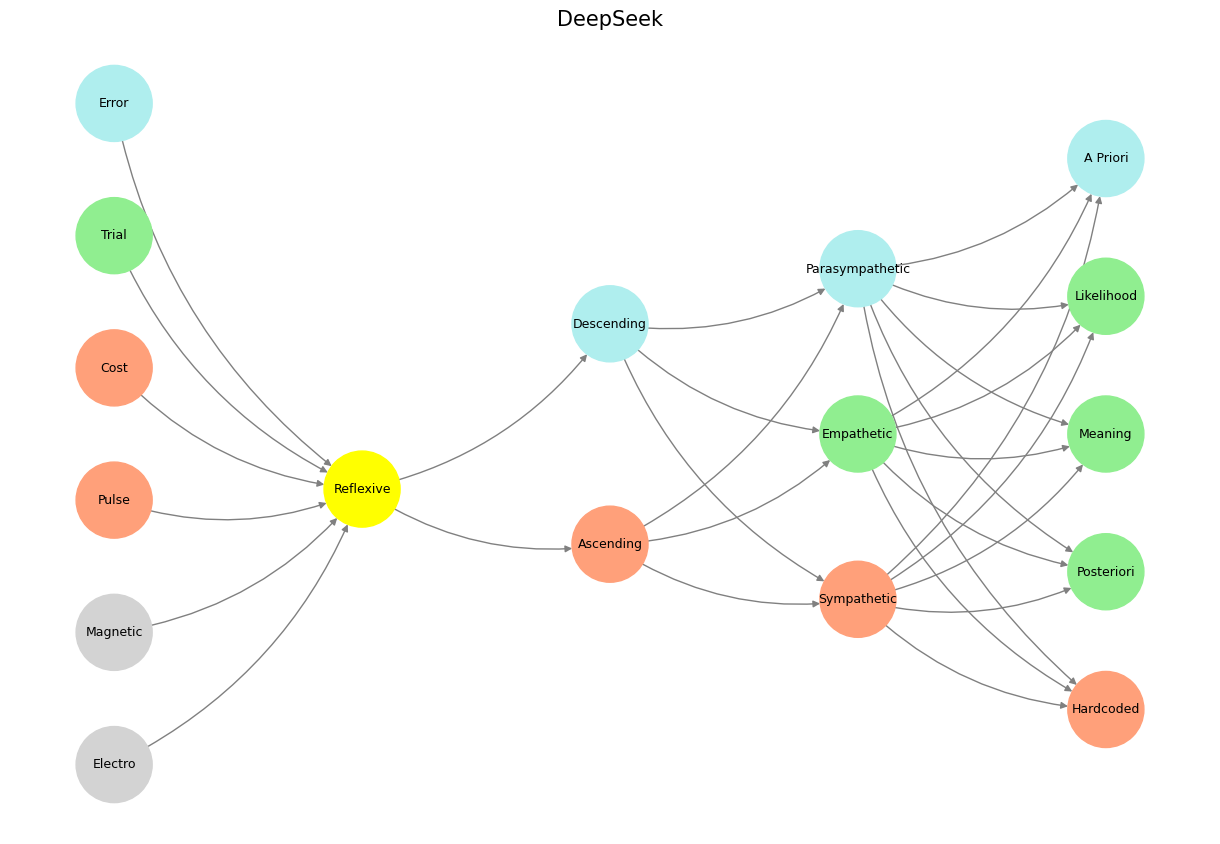Veiled Resentment#
The neural network model of English gossip operates on a gradient of social distance, with the widest permissible gossip at the outermost layer and the most restricted gossip at the innermost. The odds of sharing information shift as one moves from discussing public figures (which is universally accepted) toward discussing personal relations (which becomes increasingly sensitive and constrained). At the farthest reaches of the network, gossip is nearly cost-free, while at the most intimate levels, the risks are high and the boundaries tightly enforced.
At the broadest level—what we can call the Public Sphere—gossip about celebrities, politicians, and royals is fair game. This is the 95/5 layer, where the parasympathetic nervous system dominates. Discussing the affairs of public figures carries almost no social penalty, as they exist in a space where their lives are already commodified for consumption. This is a level of gossip that unites rather than divides, serving as a shared cultural discourse where even strangers can engage in conversation without discomfort. There is no real social risk in discussing the latest scandal of a politician or the romantic entanglements of a movie star because these individuals have, in effect, been absorbed into the collective imagination. Their lives function as open-source data in the neural network of English society.

Fig. 23 Ecological Cost vs. Optimized Efficiency. Nietzsche’s focus on “values” and the “transvaluation” of all values or of postmodern mankind, alienated (in Marxist sense), because they “killed god”. His prophetic soul!#
Descending to the next layer—the Community Sphere—gossip narrows to acquaintances, colleagues, and local figures. This is where a degree of caution enters the equation. The odds have shifted to something like 80/20, meaning that while gossip is still widely permissible, there is now a subtle risk in its transmission. Unlike public figures, these individuals are not abstract entities but real people within one’s extended network. As such, the social cost of misinformation or misinterpretation increases. Here, gossip functions as a social mechanism for reinforcing community norms—commenting on a neighbor’s peculiar habits or a coworker’s rumored promotion carries the dual function of entertainment and informal social regulation. However, the risk of backlash is present, requiring a degree of circumspection in both tone and audience selection.
Moving inward to the Personal Sphere—the domain of friends and family—the odds tighten dramatically to 51/49. Gossip at this level is high-risk, requiring a balance of trust and discretion. Unlike the previous layers, where gossip often serves a communal function, this level involves deeply personal stakes. Sharing information about a sibling’s struggles, a friend’s private dilemmas, or an employer’s questionable decisions means navigating a social minefield. Here, the sympathetic nervous system begins to assert itself—gossip is no longer just an idle exercise but a potentially fraught exchange. The risk of emotional consequences, reputational harm, and even fractured relationships looms large, making this a space where every act of disclosure is weighed with care.
At the most intimate level—the Confidential Sphere—gossip is highly restricted, operating under a 5/95 risk ratio. This is the space of the closest confidences, where private details are shared only with the most trusted inner circle—partners, best friends, or family members bound by unshakable loyalty. At this level, gossip is no longer a social tool but an act of vulnerability, where revealing information comes with an expectation of absolute discretion. Unlike the parasympathetic openness of the public sphere, this domain is governed by extreme sympathetic activation—one wrong move can shatter trust, leading to fallout that is deeply personal and long-lasting. This is the equivalent of a high-stakes neural impulse, where misfiring could lead to severe disruption within one’s immediate social network.
Thus, the neural network of English gossip operates as an inverted pyramid of risk, where the further one moves outward, the more permissible and widespread gossip becomes, and the further one moves inward, the more constrained and precarious it is. The Queen, as the apex public figure, exists at the most distant and least controversial point of gossip, while one’s closest relationships form the most delicate and restricted space. The English, in their finely calibrated social intelligence, instinctively regulate this process, ensuring that information flows in a manner that preserves both societal cohesion and personal trust.
Show code cell source
import numpy as np
import matplotlib.pyplot as plt
import networkx as nx
# Define the neural network fractal
def define_layers():
return {
'World': ['Electro', 'Magnetic', 'Pulse', 'Cost', 'Trial', 'Error', ], # Veni; 95/5
'Mode': ['Reflexive'], # Vidi; 80/20
'Agent': ['Ascending', 'Descending'], # Vici; Veni; 51/49
'Space': ['Sympathetic', 'Empathetic', 'Parasympathetic'], # Vidi; 20/80
'Time': ['Hardcoded', 'Posteriori', 'Meaning', 'Likelihood', 'A Priori'] # Vici; 5/95
}
# Assign colors to nodes
def assign_colors():
color_map = {
'yellow': ['Reflexive'],
'paleturquoise': ['Error', 'Descending', 'Parasympathetic', 'A Priori'],
'lightgreen': ['Trial', 'Empathetic', 'Likelihood', 'Meaning', 'Posteriori'],
'lightsalmon': [
'Pulse', 'Cost', 'Ascending',
'Sympathetic', 'Hardcoded'
],
}
return {node: color for color, nodes in color_map.items() for node in nodes}
# Calculate positions for nodes
def calculate_positions(layer, x_offset):
y_positions = np.linspace(-len(layer) / 2, len(layer) / 2, len(layer))
return [(x_offset, y) for y in y_positions]
# Create and visualize the neural network graph
def visualize_nn():
layers = define_layers()
colors = assign_colors()
G = nx.DiGraph()
pos = {}
node_colors = []
# Add nodes and assign positions
for i, (layer_name, nodes) in enumerate(layers.items()):
positions = calculate_positions(nodes, x_offset=i * 2)
for node, position in zip(nodes, positions):
G.add_node(node, layer=layer_name)
pos[node] = position
node_colors.append(colors.get(node, 'lightgray'))
# Add edges (automated for consecutive layers)
layer_names = list(layers.keys())
for i in range(len(layer_names) - 1):
source_layer, target_layer = layer_names[i], layer_names[i + 1]
for source in layers[source_layer]:
for target in layers[target_layer]:
G.add_edge(source, target)
# Draw the graph
plt.figure(figsize=(12, 8))
nx.draw(
G, pos, with_labels=True, node_color=node_colors, edge_color='gray',
node_size=3000, font_size=9, connectionstyle="arc3,rad=0.2"
)
plt.title("DeepSeek", fontsize=15)
plt.show()
# Run the visualization
visualize_nn()


Fig. 24 Vet Advised When to Sell Horse. Right after an outstanding performance. Because you want to control how its perceived, the narrative backstory, and how its future performance might be imputed. Otherwise, reality manifests with point and interval estimates. This is the subject matter of the opening dialogue in Miller’s Crossing.#

